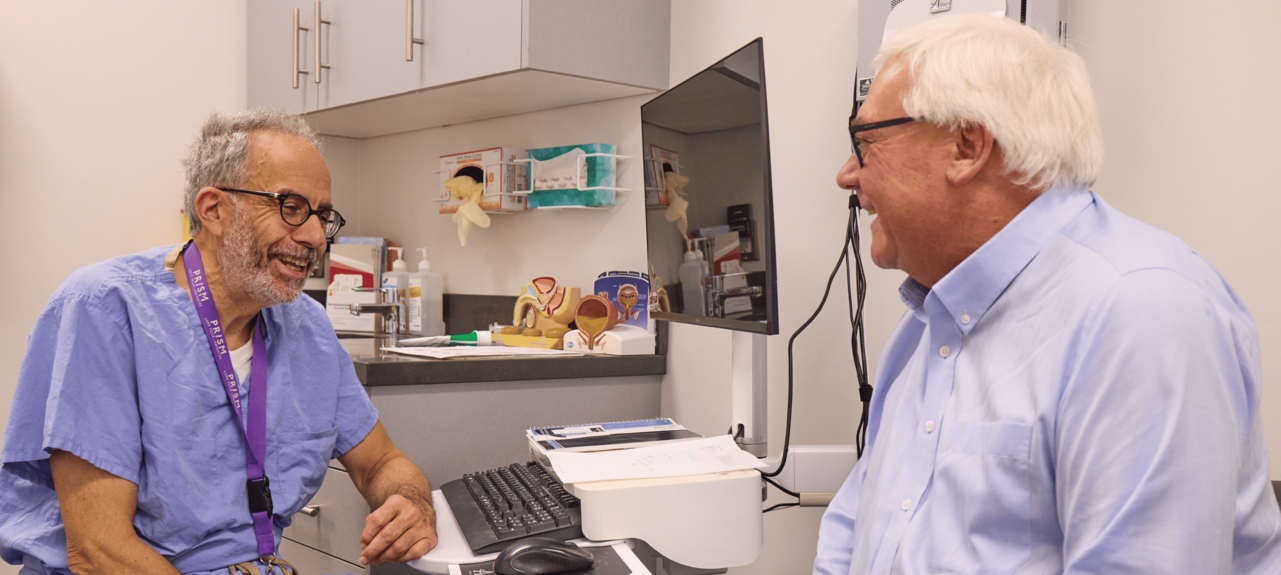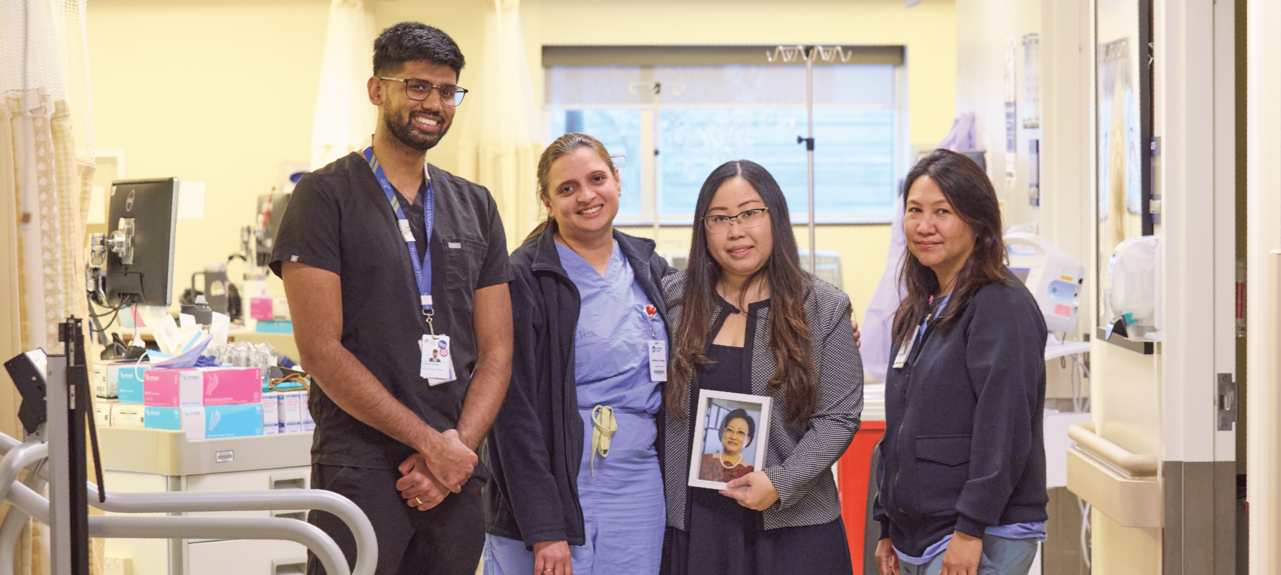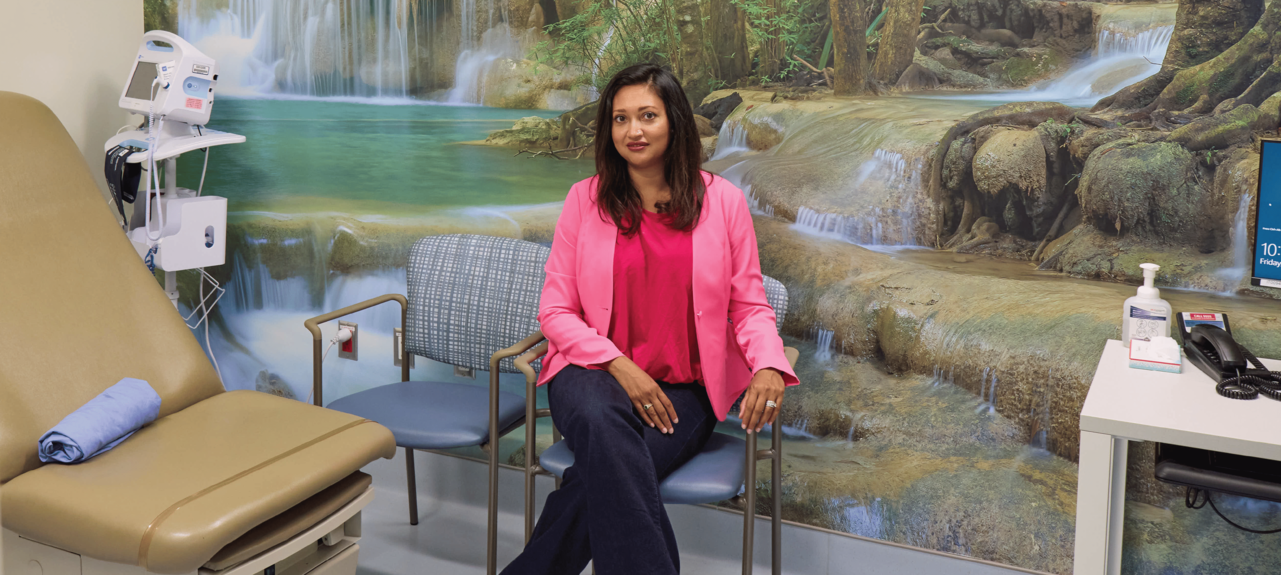
إضاءة الطريق إلى علاج أكثر كفاءة
يعمل ليزر الضوء الأخضر الجديد في مستشفى ماركهام ستوفيل على تقليل الإقامة في المستشفى وأوقات الانتظار لإجراء جراحات البروستاتا.

الدكتور شيخ وبرادلي ستيل
الدكتور شيخ أعاد حياتي لي.
برادلي ستيل

مزايا واضحة
يتم إجراء الجراحة الأكثر شيوعا لتضخم البروستاتا الحميد بالمنظار من خلال مجرى البول ، حيث يقوم الجراح بتجويف البروستاتا عن طريق حلق الأنسجة بعيدا بحلقة الكي. إنه فعال ، ولكن هناك قدر لا بأس به من النزيف ، ويحتاج المرضى إلى البقاء في المستشفى لبضعة أيام للتعافي.
ومع ذلك ، في السنوات الأخيرة ، أصبح GreenLight Laser الأداة المفضلة لأنه يمكن الجراحين من تبخير أنسجة البروستاتا بشكل أساسي بدلا من ذلك ، مما يؤدي إلى القضاء على معظم النزيف. والأفضل من ذلك ، أن الجراحة أصبحت الآن إجراء للمرضى الخارجيين ، مما يسمح للجراحين بإخراج المرضى في نفس اليوم وتحرير أسرة المستشفيات التي تشتد الحاجة إليها.
"عندما تخبر المرضى أنه يجب عليهم إجراء عملية جراحية ، فإن سؤالهم الأول هو" كم من الوقت يجب أن أبقى في المستشفى؟ " يلاحظ الدكتور شيخ. "ولكي تكون قادرا على القول ،" هذا مجرد إجراء ليوم واحد "، فإنه يريح عقولهم حقا ويساعدهم على قبول الحاجة إلى الجراحة. وهم راضون تماما بعد ذلك ، لذا فهو إجراء ممتع للغاية ".
يقدر الدكتور شيخ أن حوالي 70 إلى 80 في المائة من العمليات الجراحية المتعلقة بتضخم البروستاتا الحميد في MSH سيتم إجراؤها باستخدام GreenLight Laser للمضي قدما ، مع استخدام الجراحة بالمنظار أو الجراحة المفتوحة للحالات الأخرى التي تتطلب خزعة الأنسجة. ستزيد هذه الخطوة من قدرة المستشفى على علاج هذه المشكلة الشائعة وبالتالي تقليل أوقات الانتظار. يقترب قسم الجراحة في MSH من مهمة زيادة السعة وتقليل أوقات الانتظار من زوايا متعددة - افتتاح غرفة عمليات تاسعة في عام 2024 وإطلاق حملة لجمع التبرعات للحصول على معدات روبوتات جراحية جديدة.
أما بالنسبة لستيل ، فهو لا يستطيع تصديق الفرق الذي أحدثته هذه الجراحة. يمكنه النوم طوال الليل ولم يعد يقلق بشأن الذهاب إلى الحمام عندما يكون بالخارج.
"لقد كان هذا بمثابة تغيير لقواعد اللعبة بالنسبة لي" ، كما يلاحظ. "إنه الشيء الجسدي ، لكنه أيضا خفف بعض هذا الضغط العقلي أيضا - القلق والإحراج المحتمل. لقد أعاد الدكتور شيخ حياتي إلي".

مقال من






.png)









.avif)


















